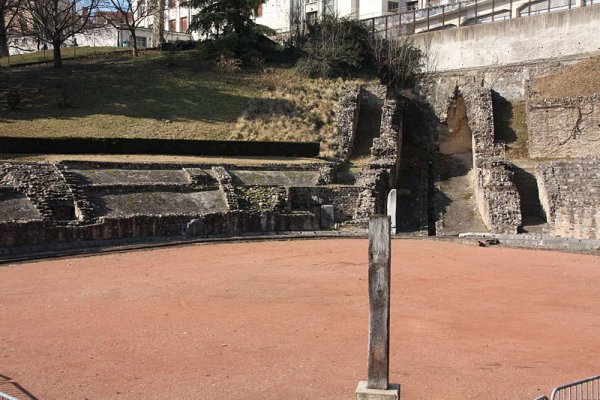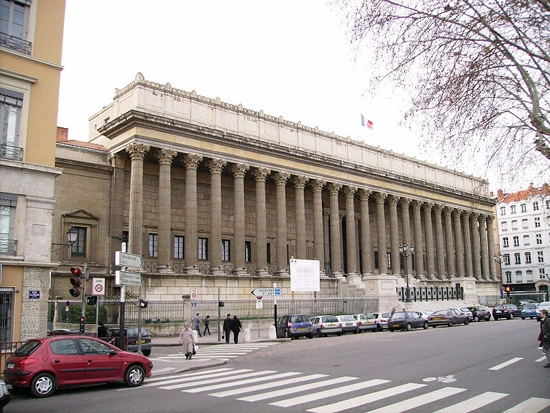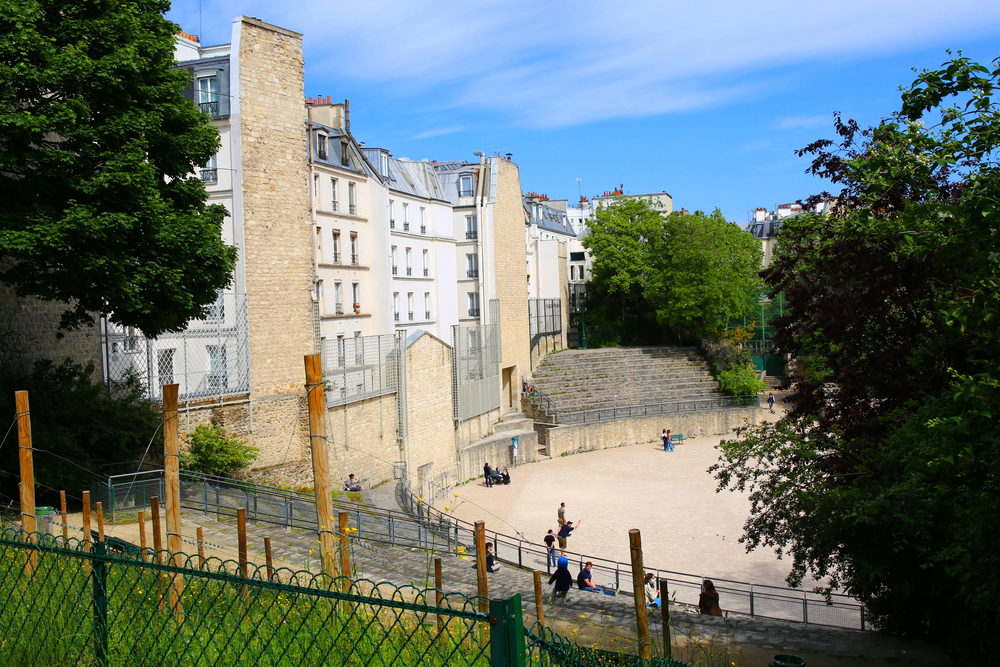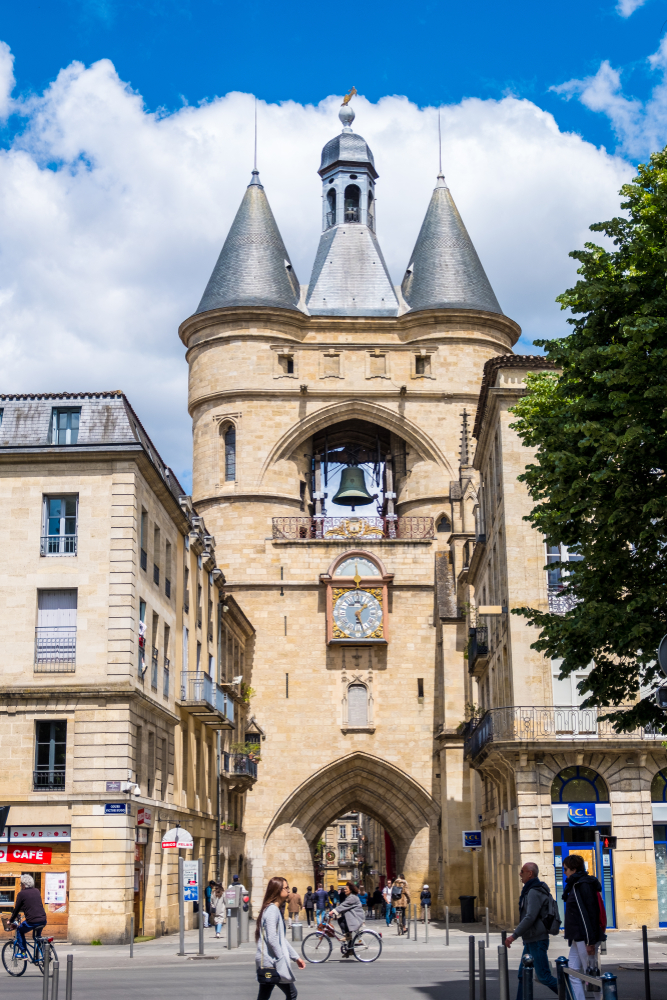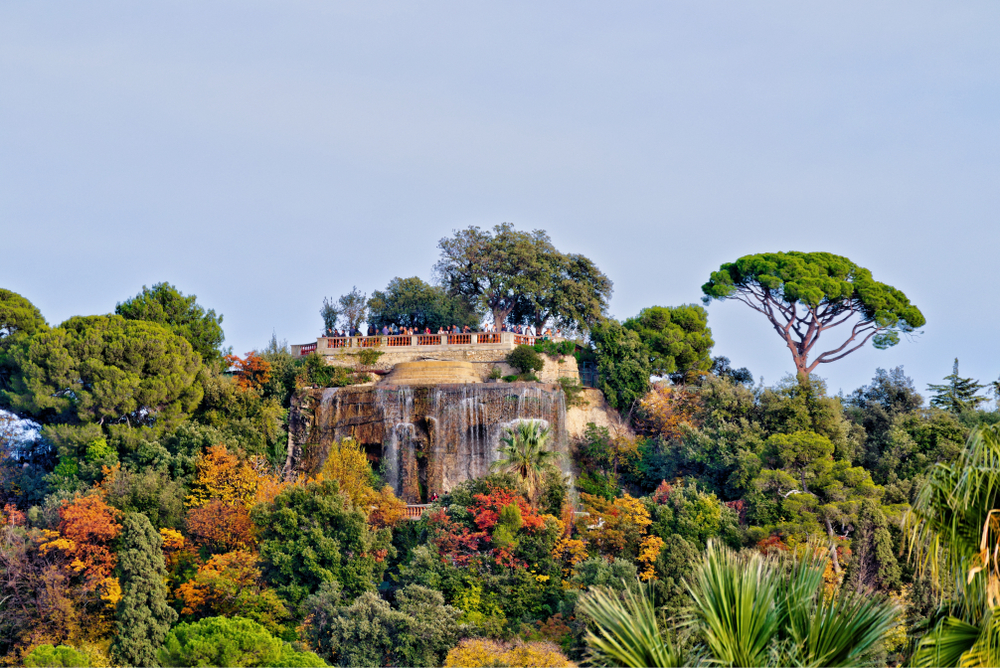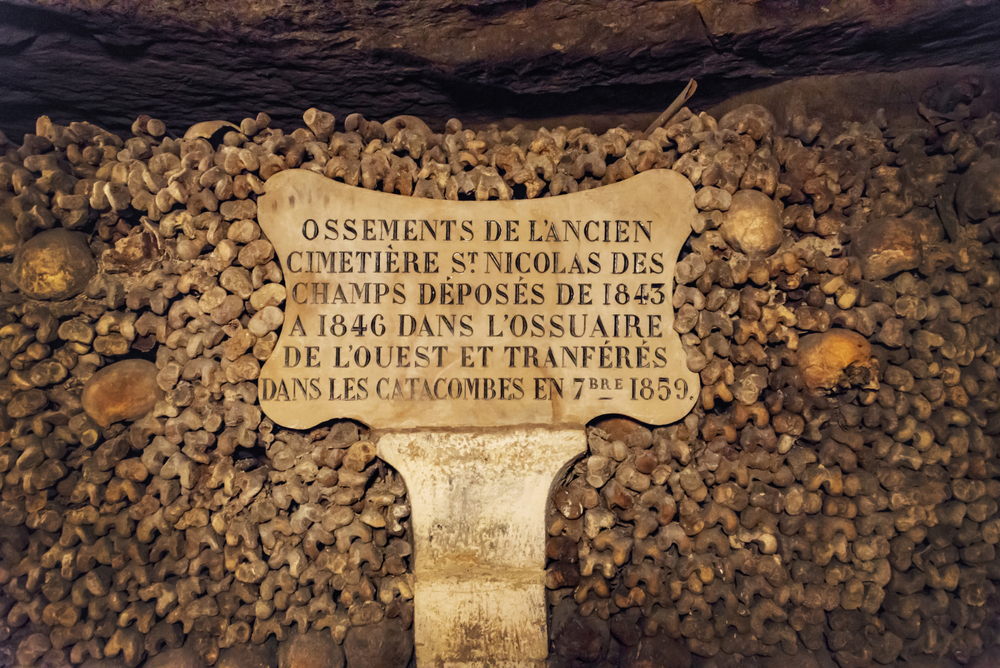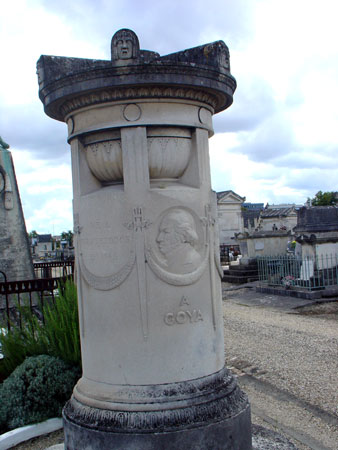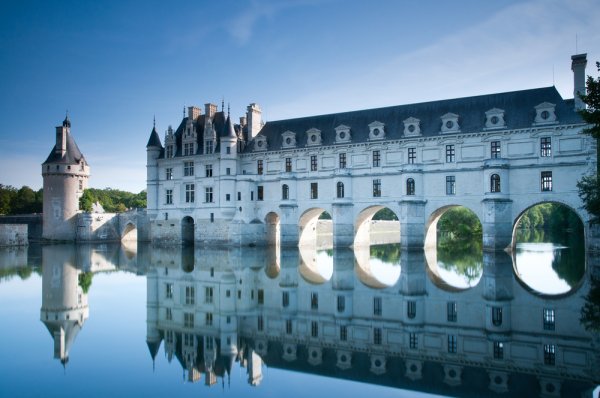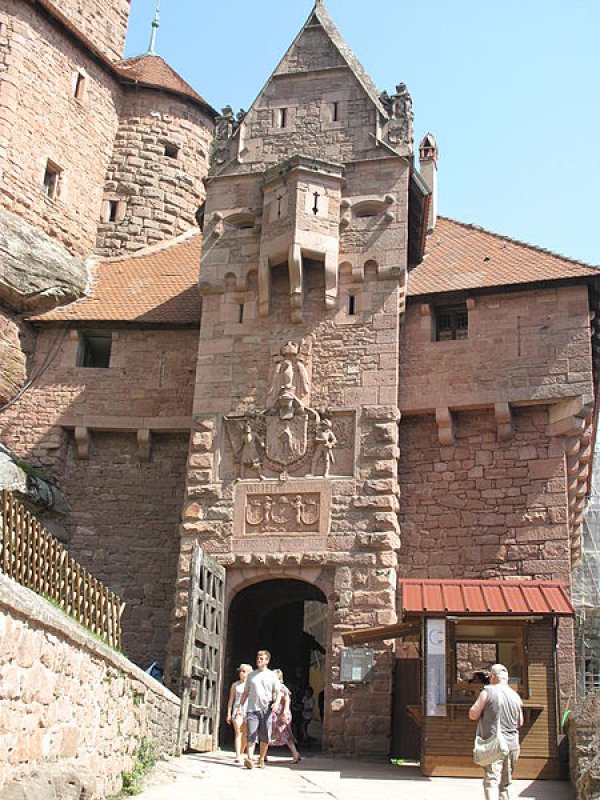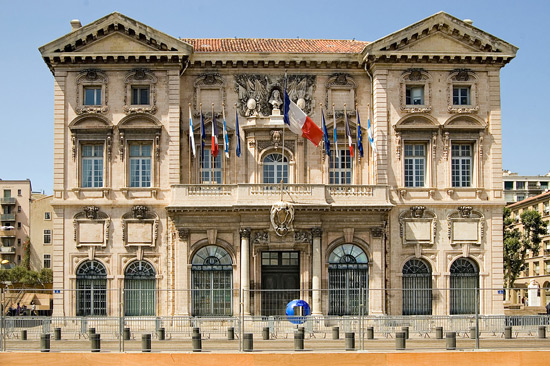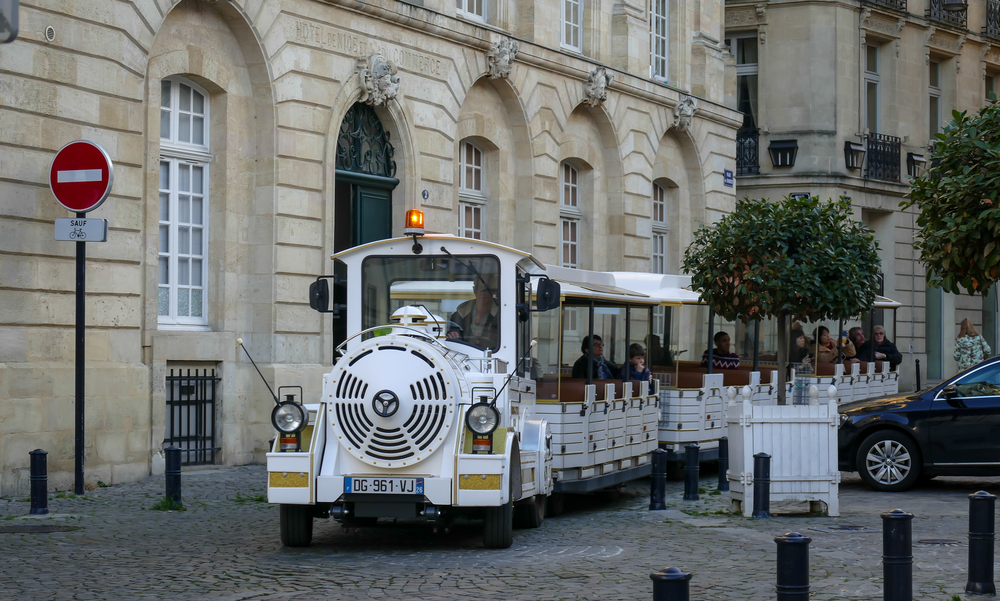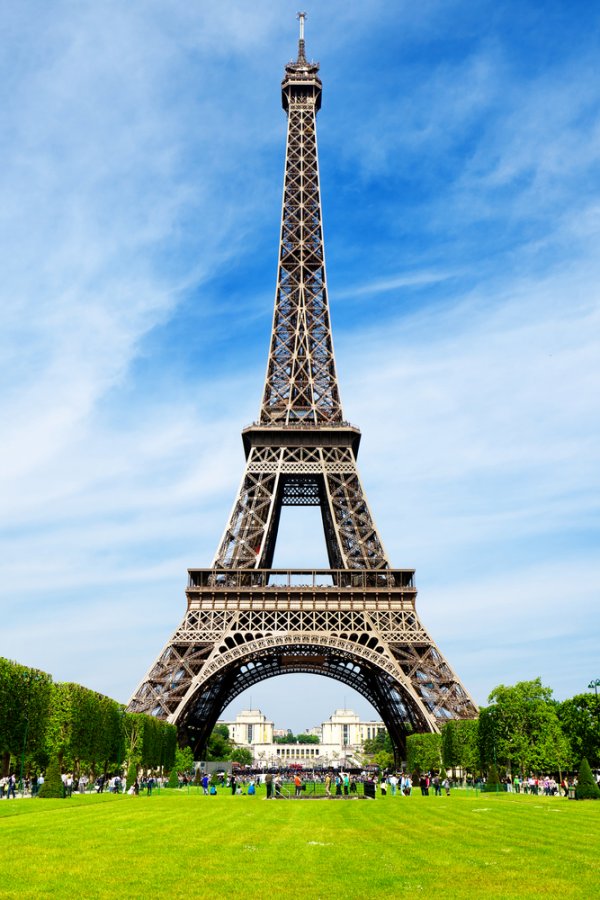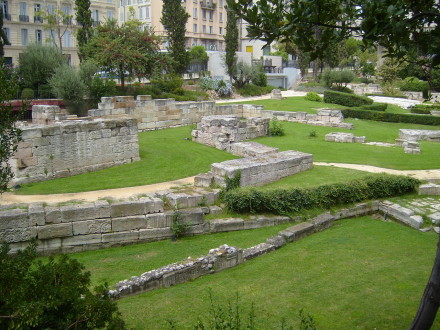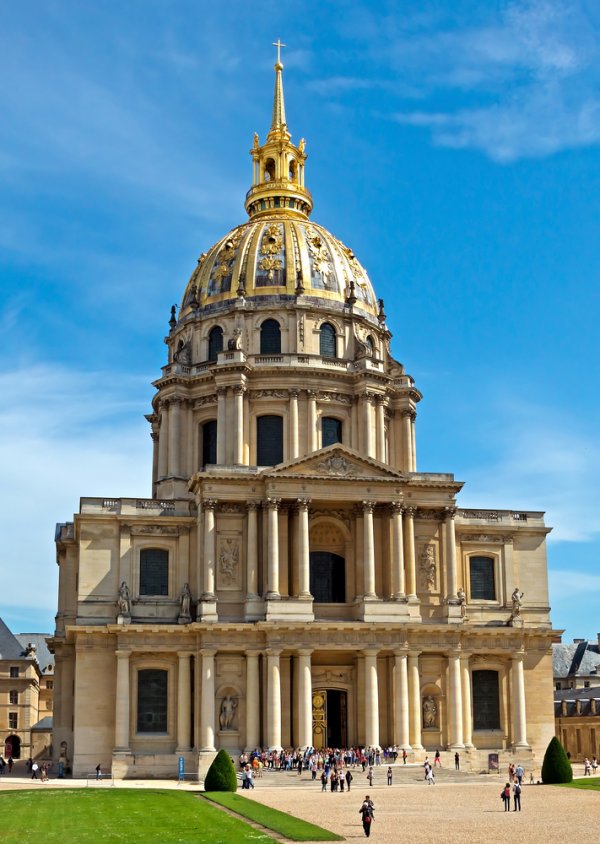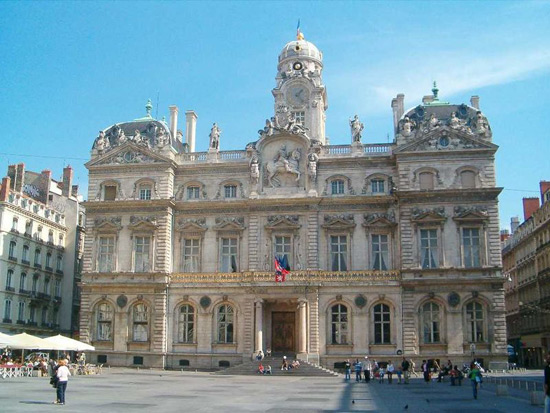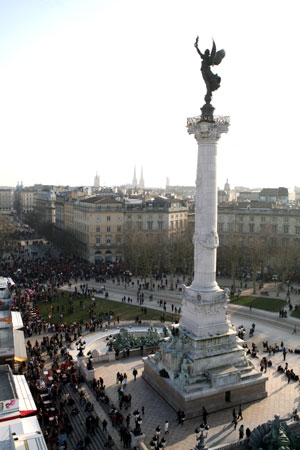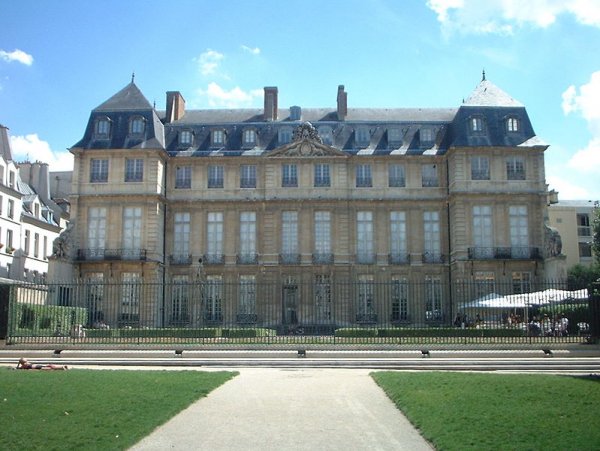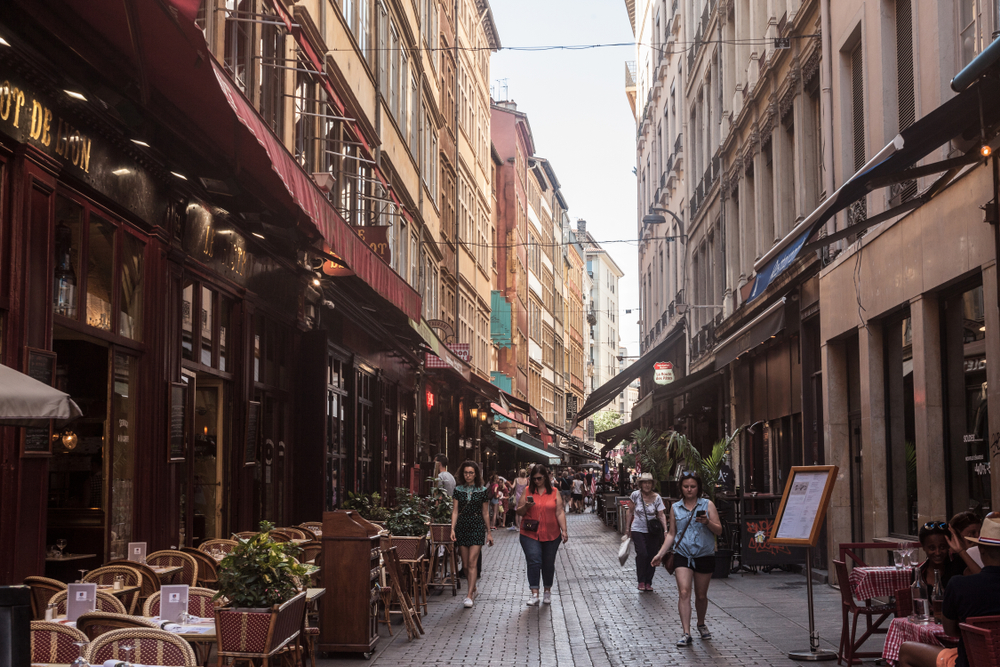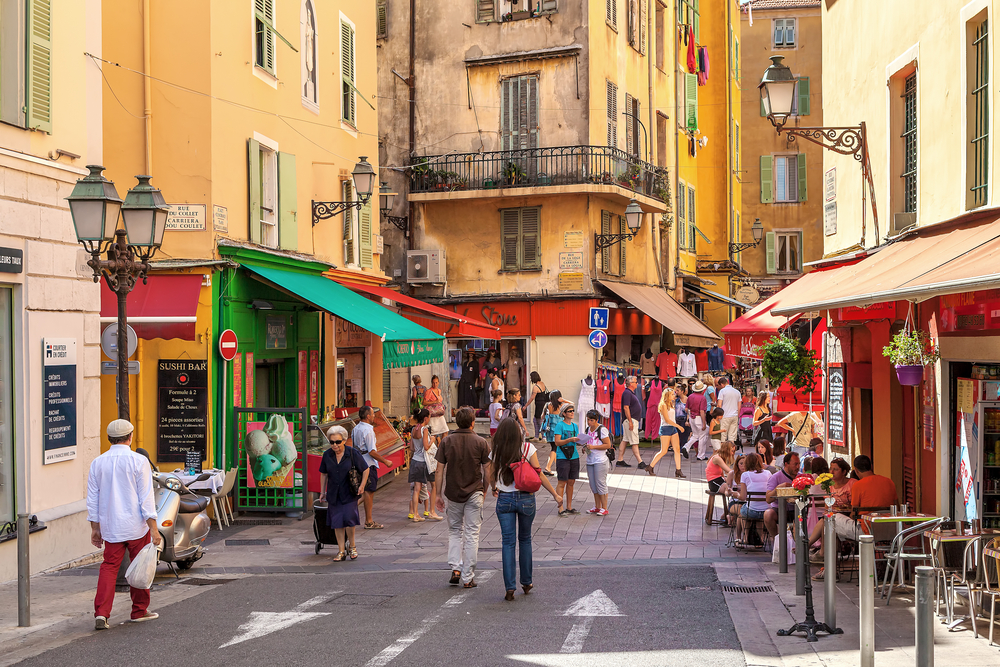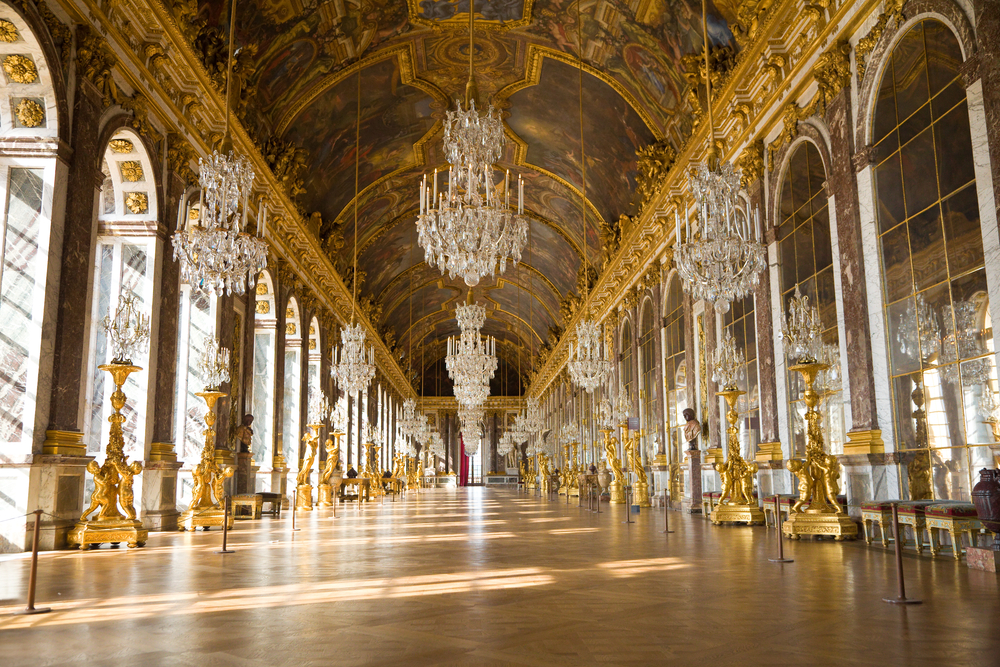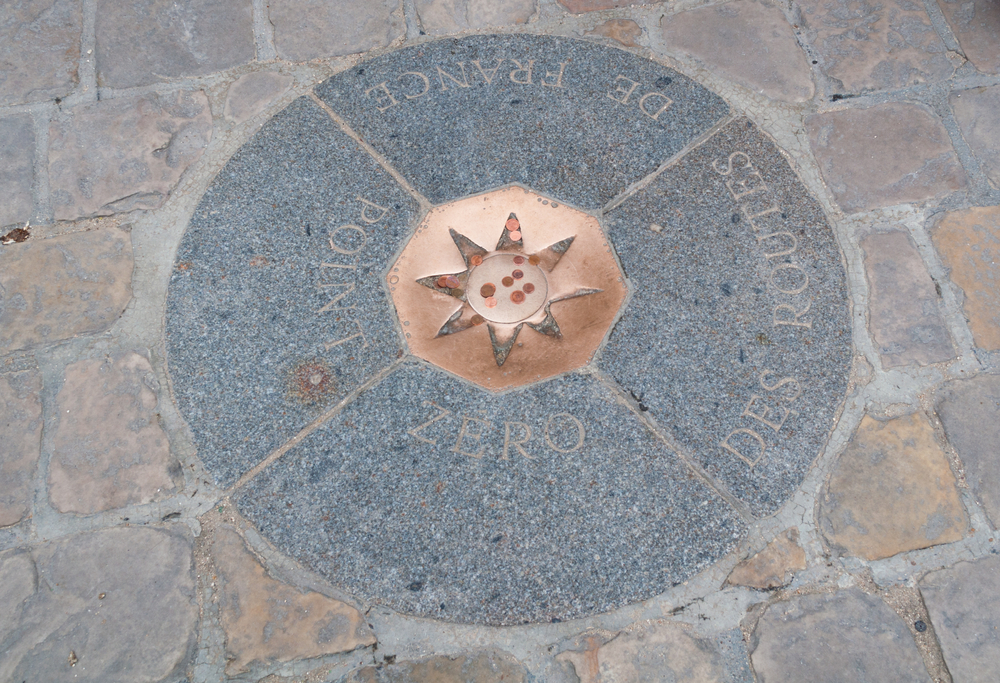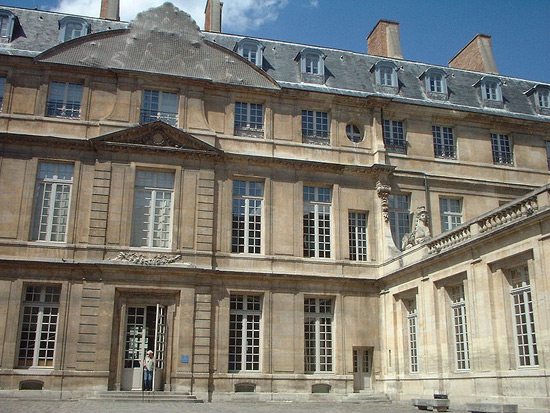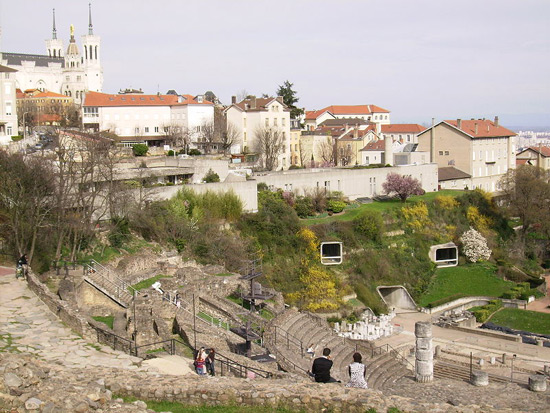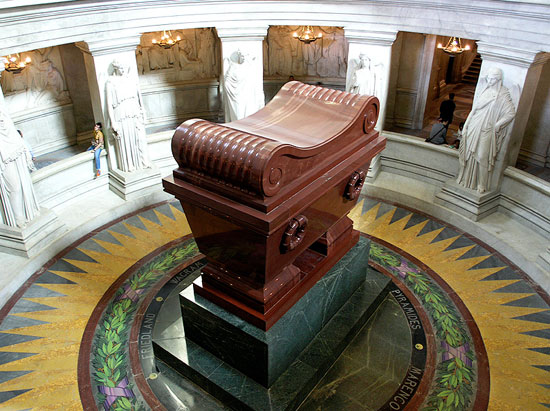Points of Interest
Amphitheater of the Three Gauls
Amphitheatre des Trois Gaules Off Rue Burdeau and Rue Sportisse
Lyon, France
This stunning relic from around 19 CE fits the classic template familiar to anyone who has seen movies such as Gladiator and Ben-Hur. It was here that the 60 tribes of Gaul gathered to celebrate the cult of Rome and its Emperor Augustus. Later on, the first Christians were killed here, but it is claimed that the lions refused to kill the very first martyr, Blandine, so the Romans had to do it themselves. Although considerably ruined, there is enough of the original seating in the south half of the amphitheater to still make it a unique draw. As you tour it you can almost imagine the chariots riding past and the gladiators fighting to the death.
Ancient Palace of Justice
Ancien Palais de Justice Quai Romain-Rolland
Lyon, France
In the heart of the old city, amid the cobblestoned medieval and Renaissance streets, stands the neoclassical Ancient Palace of Justice, designed by renowned architect LP Baltard in 1845. It is an iconic symbol of Lyon: the city's eventful past is recorded on a series of marvelous frescoes located in a cupola-covered room inside the building. It was here that the Italian anarchist Sante Geronimo Caserio was tried for murdering the president of France, Carnot. Notorious Nazi Klaus Barbie was sentenced here almost half a century after he committed his crimes against the French people. On a happier note, the view of the River Saone from here is rather spectacular.
Arènes de Lutèce
49 Rue de Monge
Paris, France
Built during 1st century CE after the Roman conquest of Lutetia, as Paris was then known, Arènes de Lutèce is the earliest vestige of the city’s history. These days it is a place where people come to relax, but in Roman times it served as a theater and arena holding up to 12,000 people. This architectural gem was nearly demolished in the 19th century but was fortunately saved because of a successful petition spearheaded by French writer Victor Hugo.
—Information provided by Paris Convention and Visitors Bureau
Basilica of the Sacred Heart
Basilique du Sacré-Cœur 35 rue du Chevalier-de-la-barre
Paris 75018, France
The Basilique du Sacré-Cœur (Basilica of the Sacred Heart) is a Roman Catholic church designed by Paul Abadie in a Romanesque-Byzantine architectural style. The church was built after France’s defeat in the 1870 Franco-Prussian war. Although the foundation stone was laid in 1875, construction work on the church was completed only in 1914. It opened as a place of worship after the First World War. The church is made of a stone that oozes calcite during damp weather, which ensures that the church's white color never changes even in bad weather or heavy pollution. It is a famous landmark located at the summit of Montmartre butte, the highest point in Paris.
Big Bell
Grosse Clouche 45 Rue Saint-James
Bordeaux, France
Grosse Cloche, meaning “Big Bell,” is one of the oldest belfries in France, in the heart of the city. The Latin inscription on the inside of the bell reads: “I ring the hours and my voice is a call to arms … I sing for happy events and weep for the dead.” A beloved city emblem that was once removed by King Henry II as punishment to citizens who protested the salt tax of 1548, the current bell was cast in 1775 and weighs 7.3 tonnes (8 tons). Christened “Armande-Louise,” it rings for major celebrations such as Bastille Day, VE Day, and Remembrance Day as well as at noon on the first Sunday of each month. The gateway where the bell is hung also had a defensive function and served as a prison.
—Information provided by Bordeaux Tourism and Conventions
Castle Hill
Montée du Château
Nice, France
On the famous rocky outcrop between Old Nice and the harbor sits Castle Hill, beloved by locals and visitors alike. While few sections of the old castle have survived, the area is celebrated for its breathtaking panoramic views of the city and sea. Kids can imagine what the castle was like while exploring. There are pine trees, carobs, figs, aloes, a gorgeous waterfall, children's playground, medieval ruins, and more. It was once the site of a military citadel, and there is a naval museum in its Bellanda Tower. Visitors can either brave the laborious climb to the top for free or take an elevator for a nominal fee. Plan on taking lots of photos at this scenic venue and even bring a picnic.
Catacombs of Paris
Catacombes de Paris 1 Avenue du Colonel Henri Rol-Tanguy
Paris 75014, France
Originally mines for the stone that built Paris, the network of tunnels was turned into a huge ossuary in the 18th century after the city's cemeteries started overflowing (the famous Parisian cemeteries such as Père Lachaise also date from around this time). It took French administrators 15 months to re-inter the remains of 6 million people, transporting them in black-veiled carts by night. Bones are arranged not by body, but by type (femurs stacked here, tibias piled there). Among the bodies is that of Madame de Pompadour, a victim of the French Revolution. It's said that the aristocratic Comte d'Artois used to throw crazy parties down here. The French Resistance also used the 180 miles of tunnels during World War II. Be warned, there are more than 100 steps, there is no toilet, and the stones can be slippery.
Catacombs of Paris
1 Avenue du Colonel Henri Rol-Tanguy
Paris, France
Touring the catacombs of Paris is creepy yet interesting, though you may want to visit without children. The underground resting place of more than 6 million humans, their bones were moved into these old stone quarries after the city’s cemeteries became overcrowded and raised concerns about public health. Moving the bones took over a year, occurring during the French Revolution that began in 1789. The bones are arranged in the style of Roman necropolises, tucked into the walls of the tunnels that stretch over 300 kilometers (186 miles). It’s a silent and somber experience, seeing layers of bones and lines of skulls, though the popular attraction can mean wait times of up to two hours. Tours are available and audio guides are offered in French, Spanish, and English.
Chartreuse Cemetery
180 rue Georges-Bonnac
Bordeaux, France
Although it does have a few French household names scattered throughout its gravestones, the Chartreuse Cemetery is more notable for its eclectic stonework and extraordinary diversity of tombs. So while many visitors come to see the mausoleum of Spanish painter Francisco Goya (although he died in Bordeaux, his body is interred in Madrid), others come simply to admire the sepulchral sculptures. From simple stele to full stone kiosks, complete with Norman arches and vaults, the range of monuments is striking and moving. Look out for the statue of Death, hooded and holding a scythe, a macabre forecast for every citizen of Bordeaux, no matter how celebrated. Among the lesser names entombed here are the beatified priest Guillaume-Joseph Chaminade (now known as Blessed Chaminade), painter Pierre Lacour, writer and proto-feminist Flora Tristan (also grandmother to Gauguin), and a couple of French Revolution generals.
Château de Chenonceau
On the Cher River Chenonceaux
Centre 37150, France
The Château de Chenonceau, located on the banks of the Cher River in the small village of Chenonceaux, is a classic symbol of French history and culture. It was designed by the French Renaissance architect Philibert Delorme. The waters of the Cher River reflect the castle's magnificent architecture and enhance its beauty. The castle contains a vast collection of 16th and 17th-century tapestries, renaissance furniture, and art masterpieces from eminent artists like Le Primatice, Rubens, Le Tintoret, Rigaud, Nattier, and Van Loo. Women have had a large part to play in the castle's history, from its rebuilding overseen by Katherine Briçonnet in 1513 to its protection from destruction during the French Revolution by Louise Dupin.
Château du Haut-Kœnigsbourg
Off of rue du Château Northeast of Dijon Orschwiller
Alsace 67600, France
Situated on the Alsace Wine Route, the Château du Haut-Kœnigsbourg dates back about 900 years and is the biggest castle in Alsace, with enormous walls and towers made of red sandstone. The castle was destroyed and rebuilt twice, most recently in 1899 by Emperor Wilhelm II. Since the castle overlooks the Alsatian plain, many rulers have vied for it, from the time of the Middle Ages until the Thirty Years' War, after which its ruins remained abandoned. In 1993, the French Ministry of Culture declared the castle a national historic site, and it is now one of the most popular tourist attractions in the region.
City Hall of Marseille
Port Marseille, France
In the 1600s, architect Pierre Puget built Marseille's city hall under the strict orders of Louis XIV himself. The Genoese-Baroque structure, located precisely where the old town hall once stood on the right bank of the Vieux Port, stands out among the other buildings in this area as a beautiful example of the civil architecture of the period. Since Marseille's town council has been meeting at this place since the Middle Ages, the spot and the Hôtel de ville represent power and democracy in the city. Today, the building is home to the mayor's offices, the municipal councilors' offices, and other administrative headquarters.
City Train Tour
12 Cours du 30 Juillet
Bordeaux 33000, France
Sit back and relax on a city train tour that lasts a brief, kid-friendly 45 minutes. Trains leave from the city’s tourist information office every two hours and meander past several of the city’s main historical sights. Among them are the Place de la Bourse and Place des Quinconces, one of Europe’s largest city squares filled with monuments and fountains. The city office provides scripted commentary of the tour’s attractions in eight languages. Visit the website for details, tickets, and hours of operation.
EDF Bazacle Centre
Éspace EDF Bazacle 11 quai St-Pierre
Toulouse, France
Deriving from the Latin word for ford, this hydroelectric power station is located at a shallow neck of the Garonne where Toulousaines have crossed the river for hundreds of years. In the 12th century, mill owners began to harness the Garonne's hydro power, building a rudimentary dam and utilizing the flow of water to drive floating mills. Over the years, the mills grew bigger, land-based, and more profitable (the enterprise was one of Europe's first joint stock companies). In 1890, the Bazacle hydroelectric plant was constructed, and although more modern machinery has been installed since, visitors on guided tours can still see the 19th-century technology. In addition to providing the electricity for more than 3,000 homes, this riverside installation offers space for temporary exhibitions and displays on marine species, including those that use the fish ladder to swim upstream annually.
Eiffel Tower
Tour Eiffel Champ de Mars, 5 Avenue Anatole
Paris 75007, France
One of the most famous structures in the world, the Eiffel Tower is an iron tower that stands 324 meters (1,063 feet) tall, has 1,665 steps, and weighs 7,300 tons. The tower, named after its builder, Alexandre Gustave Eiffel, was constructed for the Paris exposition of 1889 and opened by England's Prince of Wales. Upon completion, the Eiffel Tower replaced the Washington Monument as the tallest structure in the world. Visitors to the tower can reach the summit but require the use of elevators beyond the second floor. In windy conditions, the tower sways between 6 to 7 centimeters.
Garden of Vestiges
Le Jardin des Vestiges 17 Cours Belsunce
Marseille, France
Long before the modern city of Marseilles rose up around it, an ancient Greek port existed, the remnants of which are within Le Jardin des Vestiges (Garden of Vestiges). The preserved archeological site includes parts of an old Roman road as well as portions of quays and wharves that once saw busy shipping activity about 2,500 years ago. Wander the landscaped garden, noting the contrast between the worn rock portions and the modern buildings surrounding the area, which is near the Vieux Port. The ruins are part of the city’s Museum of Marseille, and admission to the outdoor site is included with the museum’s ticket price.
Les Invalides
129 rue de Grenelle
Paris 75007, France
Construction for Les Invalides was completed in 1678. The complex was originally designed and used as a retirement home and hospital for veterans of war until the early 20th century. Les Invalides also is the site of Napoleon Bonaparte's tomb, and the chronicles of Napoleon's victories are etched on its walls. King Louis-Philippe arranged for Napoleon's remains to be buried at St. Jerome's Chapel in 1840. In 1861, Napoleon's remains were placed in a red tomb under the dome at Les Invalides. The Institution Nationale des Invalides continues to operate a retirement home and medical centers for disabled veterans in some of the buildings on site. Other buildings in the complex include museums and monuments, all relating to the military history of France.
Lyon City Hall
1 Place de la Comédie
Lyon, France
Situated between the grandeur of the Place des Terraux and the Place de la Comedie, Lyon City Hall was built between 1645 and 1651. Its design is noteworthy, especially its pediment, belfry, and grand half-relief of Louis XIV, which stands out from afar. It's no wonder that this building was declared a historic monument by the French state over a hundred years ago. As with other major sights in Lyon, the best way to see the City Hall is by night when it is illuminated by dozens of miniature lights built into its façade.
Monument to the Girondins
Monument aux Girondins Place des Quinconces
Bordeaux, France
Amid the fervor and the madness of the French Revolution were the Girondins, a group of French provincial politicians (known as deputies) who held sway for a period after the deposition of King Louis XVI. Nicknamed for the area of Western France from which many of the dozen deputies originated, the intellectual Girondins became victims of the revolution they'd helped usher in. Outmaneuvered by Robespierre and unwilling to foment more terror, they were arrested and guillotined in 1793. Since their execution, many French historians have re-examined the ideas and actions of these moderates, who are celebrated in the city's spacious Place des Quinconces. Today, the Girondins are seen in Bordeaux as political martyrs, and almost as freedom fighters. The sculpture (1902) that commemorates them is a winged female figure representing Liberty, which tops a 40-meter column. At its base is fountain full of seething horses, taken by German troops in World War II, but returned after the war.
Musée Picasso
5 rue de Thorigny
Paris 75003, France
The Musée Picasso, designed by architect Jean Boullier is considered one of the finest French historic houses in the Marais district of Paris. Prior to its establishment as a museum, the building saw several owners during its lifetime. The museum contains more than 3,000 of Pablo Picasso's works, ranging from drawings and paintings to ceramic art, many of them created after his seventieth birthday. The museum also holds Picasso's private collection of art works by masters like Cézanne, Degas, Rousseau, Seurat, de Chirico, and Matisse. In addition, the museum is home to many Iberian bronze works and a collection of ancient art.
Old Lyon
Vieux Lyon At the foot of Fourvière Hill
West side of Lyon, France
With its cobblestoned streets and hidden passageways, Old Lyon is fun to explore with kids. Mainly a pedestrian zone, the area is one of the largest Renaissance quarters in Europe and a UNESCO World Heritage site. Have lunch at one of the many cafés before stopping by the famous Terre adélice glacerie (ice cream shop) for handcrafted ice cream and sorbet. The Musée Miniature et Cinéma (Movies & Miniature Museum) is located in Old Lyon as well. If you have little children who need to expend some energy, there is a playground next to Cathedral Saint-Jean.
Old Nice
Vieux Ville From Promenade of Paillon in the north to Promenade des Anglais in the south
Just below Castle Hill, Nice, France
When you and the kids have already enjoyed the beach and that stunning Mediterranean view, venture into the city’s Old Town area to get a feel for historic Nice. There are narrow streets, pedestrian-only areas, fountains, and colorful old buildings. Many have dates marked above the doorways, which makes for a fun challenge for kids when you ask them to search for the oldest one. A look up will reveal decorative details including faces carved into the walls. A produce market in Cours Saleya offers plenty of easy-to-grab edibles for your journey, or just plan to stop at a restaurant or for ice cream or French pastries from a boulangerie (bakery). There also is a range of shops and galleries to check out and search for a memorable souvenir by which to remember your time in Nice.
Palace of Versailles
Château de Versailles palace d'Armes Versailles
Île-de-France 78000, France
This royal palace was built in four stages spanning various periods from 1664 to 1710. What started as a royal hunting lodge quickly became one of the largest and most magnificent palaces in Europe. This grand structure represents the system of absolute monarchy and attracts millions of visitors from all over the world every year. The palace consists of a number of lavish, opulent rooms like the State Apartments, the Hall of Mirrors (Galerie de Glaces), chapels, and an opera house (l'Opéra). The palace also has numerous parks and outbuildings.
Palais Gallien
Gallien Palace 113 rue Docteur Albert Barraud
Bordeaux, France
Want to find the center of Burdigala? For Bordeaux's principal site of Roman remains, tour the Gallien Palace, an amphitheater that dates back to the end of the Roman Empire in the latter half of the 3rd century. The years have not been kind to the "palace," which was torched by Frankish invaders not long after it was constructed. Ignored for many years by the city, by the 16th century it had became the stomping ground for prostitutes and criminals. Only after the French Revolution was it earmarked as a historical site, and left undeveloped.
Today, visitors can pick their way among the ancient arcades and walls, which once held as many as 17,000 spectators. It's worth a visit at any time of day; go at sunset, and the arches are often illuminated attractively. The gateway is in surprisingly good shape, featuring several precise arches that have defied thousands of years in their solidity. A square next to the monument is a good place to sit and ponder the games once held in the former amphitheater, or pop into the building located at the entrance that shows a 3D rendering of the structure’s original layout.
Paris’ Point Zero
Courtyard of Notre Dame Cathedral
Place Jean-Paul II
Paris, France
In the courtyard outside Notre Dame Cathedral, a brass plaque embedded in a concrete slab bears a rose compass and the inscription Point zéro des routes de France meaning “kilometer zero for roads in France.” Under Louis XV, this symbolic marker became the point from which distances to all other French towns were measured. Legend has it that if you walk over this point, your footsteps will always bring you back to Paris.
—Information provided by Paris Convention and Visitors Bureau
Picasso Museum
Musée Picasso Hôtel Salé 5, Rue de Thorigny
Paris, France
Musée Picasso, designed by architect Jean Boullier, is considered one of the finest French historic houses in the Marais district of Paris. Prior to its establishment as a museum, it saw several owners during its lifetime. The museum contains more than 3,000 of Pablo Picasso's works, ranging from drawings and paintings to ceramic art, many of them created after his 70th birthday. The museum also holds Picasso's private collection of art works by masters like Cézanne, Degas, Rousseau, Seurat, de Chirico, and Matisse. In addition, the museum is home to many Iberian bronze works and a collection of ancient art.
Roman Theater at Fourviere Hill
6 Rue de l'Antiquaille Montee de Fourviere
Lyon 69005, France
What little that is left of the 2,000-year-old ancient Roman settlement of Lugdunum is still a marvel to behold. Situated on Fourviere Hill, the Roman Theater is the oldest theater in France, and is still used these days for cultural events such as Fourviere Nights festival. The Odeum, the second structure here, is a smaller venue that was probably used for poetry recitals. Its intricate marble decorations are still visible today. Lastly, you can view the foundations of a temple dating back to the second century CE. The nearby Musée Gallo-Romains (Museum of Gallic-Roman Culture) is just to the south.
The National Residence of the Invalids
Esplanade des Invalides, 7th Arrondissement
Paris, France
Les Invalides is the site of Napoleon Bonaparte's tomb, and the chronicles of Napoleon's victories are etched on its walls. It was built between 1843 and 1853, but Napoleon's remains weren't interred here until 1861, when they were placed under the dome. (The original purpose of this structure was to serve as a retirement home for war veterans.) The complex includes museums and monuments, all relating to the military history of France.
Copyright © 1993—2024 World Trade Press. All rights reserved.

 France
France 